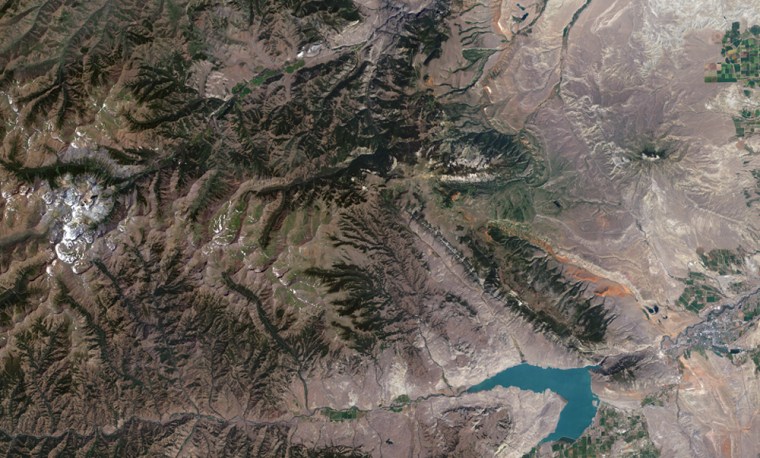A mountain near the Montana-Wyoming border once moved 62 miles in a half-hour, in a catastrophic scenario that could be repeated elsewhere, scientists say.
Rock at the summit of Heart Mountain is 250 million years older than at its base. That suggests the top and the bottom have not always been together. The presumed migration to its present home has puzzled scientists for years. They knew the mountain moved, but no one ever explained how it happened or how long it took.
A new explanation comes from deep underground, where lava bubbled up to the surface and sent the mountain on its way in surprisingly quick fashion.
Lots of vertical cracks, or dikes, in the rock set the geology of the wandering hill apart from others. The dikes filled with lava, funneling it through a zone of limestone saturated with water.
"A unique feature that helped this strange scenario is that Heart Mountain had a deep confined fluid layer," said geophysicist Einat Aharonov at the Weizmann Institute of Science. "Into this layer many, many dikes intruded in close sequence — such dike density is also not extremely common."
With Columbia University geologist Mark Anders, Aharonov devised a computer model to describe what happened below Heart Mountain 50 million years ago. The era was one of serious mountain building with a series of volcanic eruptions that formed the now-extinct volcanoes of the Absaroka Range. (Click here for an annotated satellite image.)
The dikes directed the lava into the water, heating both the rock and the water. The water was trapped, and as in a pressure cooker, its pressure rose as it was heated. Caught between layers of impermeable slate, the boiling water couldn't escape.
With nowhere to go but up, the tension finally lifted the rock, and the mountain began to glide.
"We think the slide motion was catastrophic," Aharonov told LiveScience. "According to our calculation, the motion took less than 30 minutes."
The findings, announced this week, were published in the March issue of the journal Geology.
Heart Mountain isn't the only movable mountain. Aharonov warns that, sitting on a volcanic site, the Canary Islands could be traveling soon — posing a significant tsunami risk.
